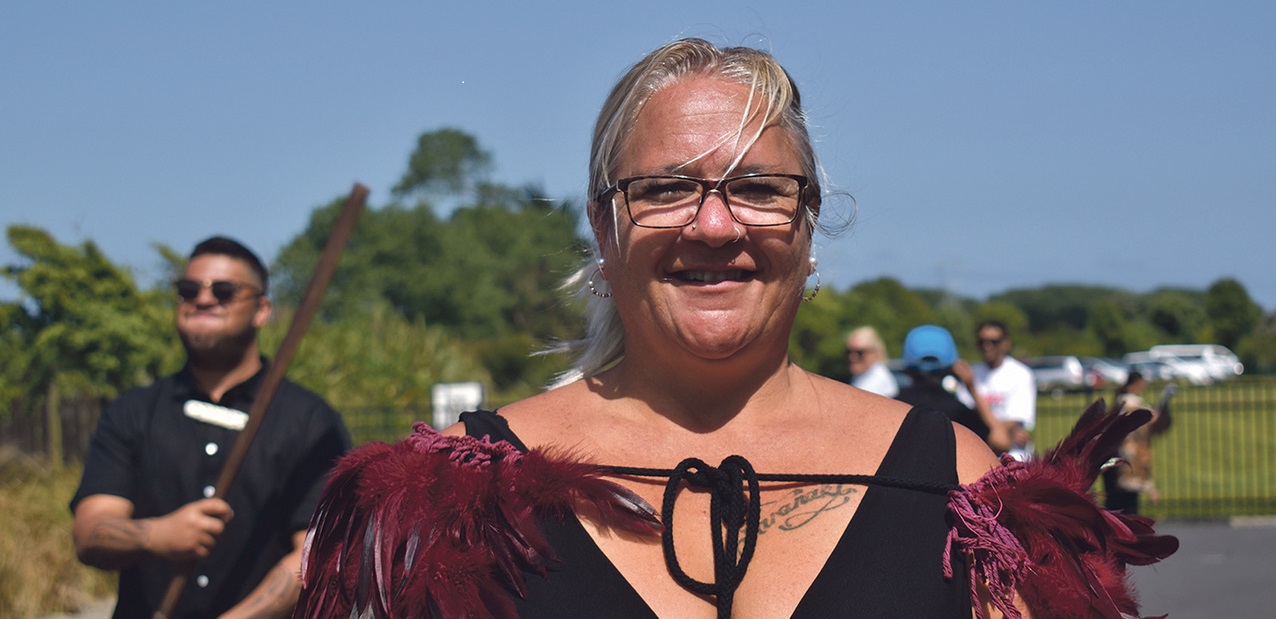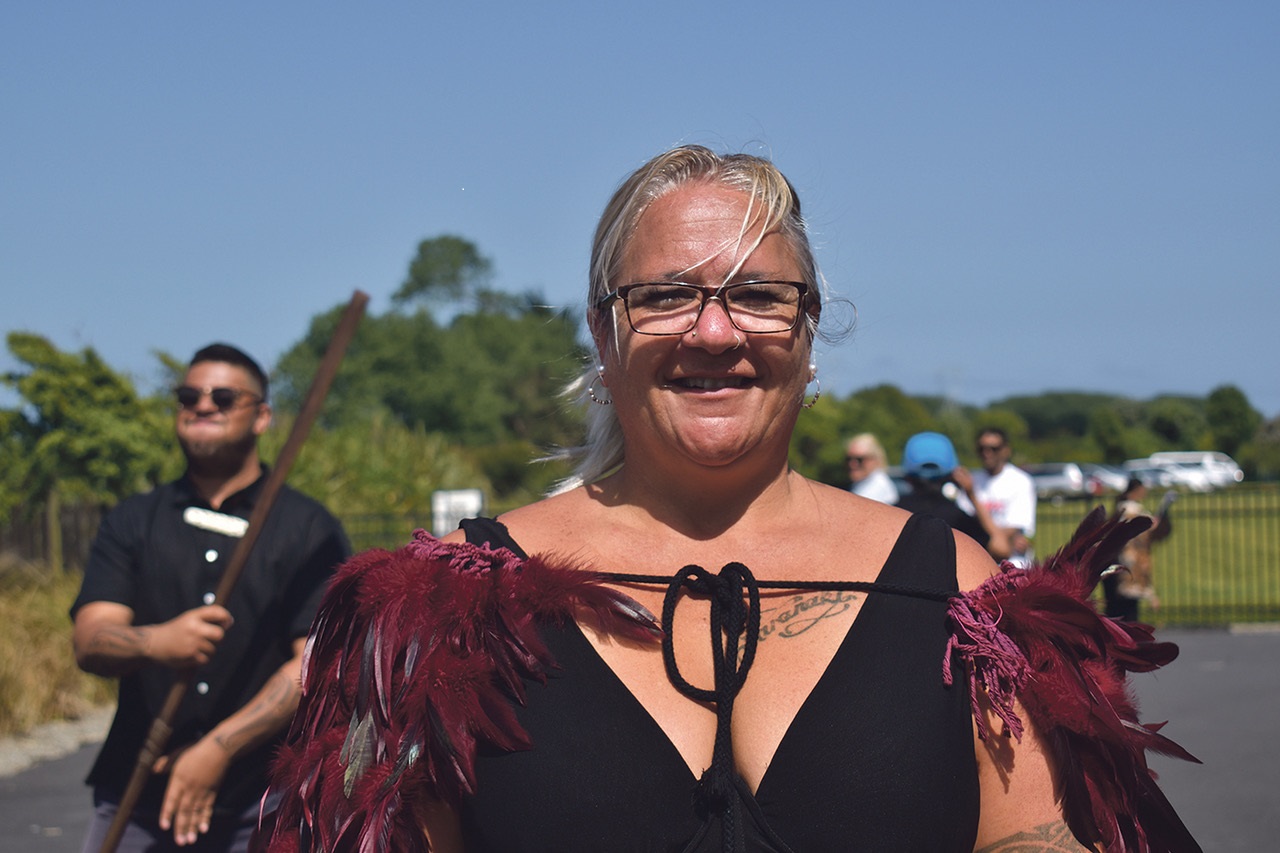
The graduation of Ōtaki’s Kelly-Anne Ngatai as a fully qualified wahine carver was a highlight of Te Wānanga o Raukawa’s graduation ceremony on Friday, December 8.
She is the first wahine to complete Poutuarongo Toi Whakarākai – Whakairo (Bachelor of Design and Art – Carving), after joining the course to study full-time three years ago. She says the same rigour by kaiako (tutors) Chris Gerritsen, Bill Doyle and Brian Climie was applied to her as the male carvers.
“I did exactly the same work, and I loved it,” she says. “The kaiako were fantastic. As a wahine I feel privileged to be allowed to carve alongside the men.”
Carving has traditionally been a male domain.
Kelly-Anne acknowledged her mother, who died only last year.
“She gave her blessing before she passed. She would have been proud that I’ve graduated.”

Te Wānanga o Raukawa’s first ever wahine whakairo (woman carver) to graduate with a degree, Kelly-Anne Ngatai, at the graduation ceremony on December 8.
Kelly-Anne and the four other 2023 whakairo graduates are heading to the South Island early next year to work on a pou (meeting house pillar) and kōwhaiwhai (painted patterns) at an Ōamaru marae.
More than 400 people enrolled with Te Wānanga o Raukawa graduated on Friday with heke (diploma) through to tāhuhu (master’s degree), making it was the biggest number of graduates ever.
Graduands and their whānau were welcomed into Ngā Purapura, Ōtaki’s world-class training facility, for what was the 42nd graduation for Te Wānanga o Raukawa.
The day was filled with emotion and elation. Graduands were both nervous and excited, and whānau were clearly proud to witness the big event. Those who couldn’t get in to the auditorium were able to watch the big screen outside, where the weather was perfect for whānau photographs, children’s activities, and entertainment from Ōtaki’s own Tui-Eilish Tahere-Katene.
“It was a wonderful celebration and acknowledgement of student achievement and their whānau support,” says Wānanga tumuaki Mereana Selby. “We’re thrilled with the attendance, which was higher than ever before, and the high number of graduates, especially at undergraduate and postgraduate degree level.
“This is a strong affirmation of the Māori education model, the importance of language and cultural revitalisation, and the expression of tino rangatiratanga.”
OTHER STORIES

